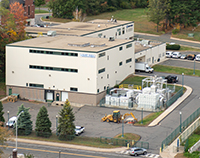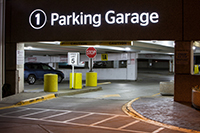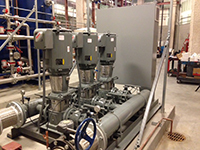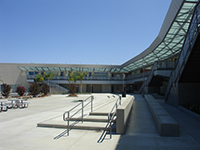view all Case Studies
Western Kentucky Receives Power Boost from Transformer Upgrade

Power transformers seldom go down, but when they do the effects on campus operations are immediate and devastating
May 11, 2015 -
Power & Communication
Power transformers seldom go down in institutional and commercial facilities, but when they do the effects on campus operations are immediate and devastating. Beyond the lost continuity of classroom instruction, the risk of subsequent fires, fines, security lapses and lawsuits can quadruple the damages.
At the same time, legacy power transformers represent a huge money drain on an educational institution’s operating budget when they force the campus to pay a steeper price for stepped-down electricity. With the current move by utility companies to deliver higher and higher voltages from the grid, many schools, colleges and universities must replace their transformers.
“We were looking at a multi-phase process to literally transform our entire campus from a 5KV to 15KV distribution system because our utility company would no longer supply the lower voltage,” says Ben Johnson, assistant director of planning, design, and construction at Western Kentucky University at the Bowling Green location. “Between that and the occasional failures within our system, not doing anything was no longer an option.”
Spurring the need for replacement is the aging infrastructure at many established teaching institutions.
“The units in our substation were 40-60 years old, and were operating at 120-125% of capacity,” continues Johnson. “Since the utility said they would no longer provide 5KV class service we had to change every primary transformer on campus.”
Faced with massive upgrades, whether demanded by an electricity provider or for preventative purposes, many campus facility engineers are now beginning the process of acquiring newer power transformers. For public entities, the project must be put out to bid. But in writing the RFQ specifications for any campus distribution system, engineers can ensure that they obtain an asset that will provide cost-effective and long-lived service through a basic knowledge of the design, construction and materials of power transformers.
Starting from the top, common types of power transformers found on campuses include liquid-filled (so called because they use oil, or similar, for cooling purposes), and dry- type transformers. Given that dry-types are air-cooled, they pose less chance of leakage and fire risk.
An Electric Service Co. (ELSCO) completely remanufactured transformer provided Western Kentucky far greater security against failures. There should be a complete rewinding of the primary and secondary coils along with brand new high and low voltage bus bars. While the original core can be kept 90 percent of the time, even it must be replaced occasionally as older steel is less energy efficient than modern core materials.
Attention to detail pays dividends in the remanufacturing process. Hand wiring ensures the highest quality. Additionally, the deburring of the copper conductor helps ensure that the insulation won’t be punctured and create a short circuit.
Ultimately, any remanufactured transformer must meet or exceed all NEMA, ANSI and IEEE standards.
Too often relegated to last-minute consideration is the need to ensure that any new power transformer fits into existing campus switchgear— carefully duplicating “form, fit and function” as much as possible.
“The main problem I’ve seen with some installations is adapting to existing facilities; it may seem like a small thing but it’s really huge,” cautions Johnson. “Obviously there will be mating and connectivity issues between your substation transformer and the secondary switchgear. I’ve seen cases with mass-produced transformers where at the end of the day you have to kluge it together to make it work. Sometimes it turns into a ‘beat to fit, paint to match’ sort of thing.”
“Our old on-campus equipment dated anywhere from the late 1920s to the 1980s,” continues Johnson. “This is where a custom-designed transformer and bus bar, like we get with the ELSCO transformers, really shines. The known reliability and track record of their transformers played a part in my selection of ELSCO. I’m an EE by trade and have been involved in electrical construction for over 25 years, so I have a respect for hardware.”
As more campuses like WKU—with approximately 5 million square feet under roof—must switch out dozens of distribution transformers, cables and underground vaults, the process will not take place overnight. Johnson recommends tackling the oldest transformers first.
“Of the 58 buildings we have on campus, I’ve still got about 18 to go so we’re still working it,” adds Johnson. “We replaced our worst equipment first to get them offline before we had more failures. Since we’ve had two-thirds of our system already replaced, obviously our failure rate has gone way down. We’ve never had any issues out of anything we’ve ever put in.”
“For other engineers in the same situation as I’m in here at WKU, I would absolutely recommend replacing your old transformers at your university,” continues Johnson. “Especially when you’re dealing with public funding scenarios like we are.”
Next
Read next on FacilitiesNet












